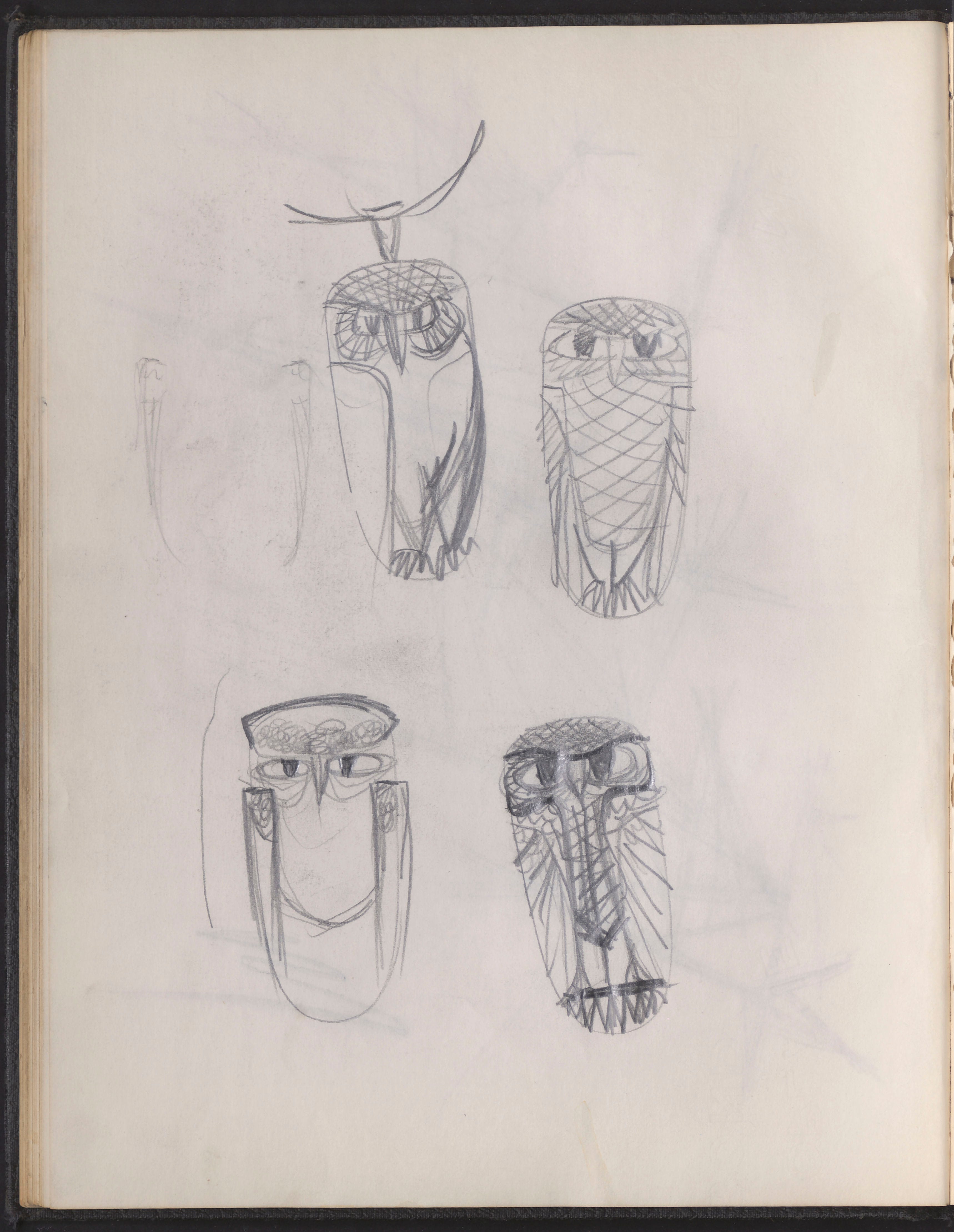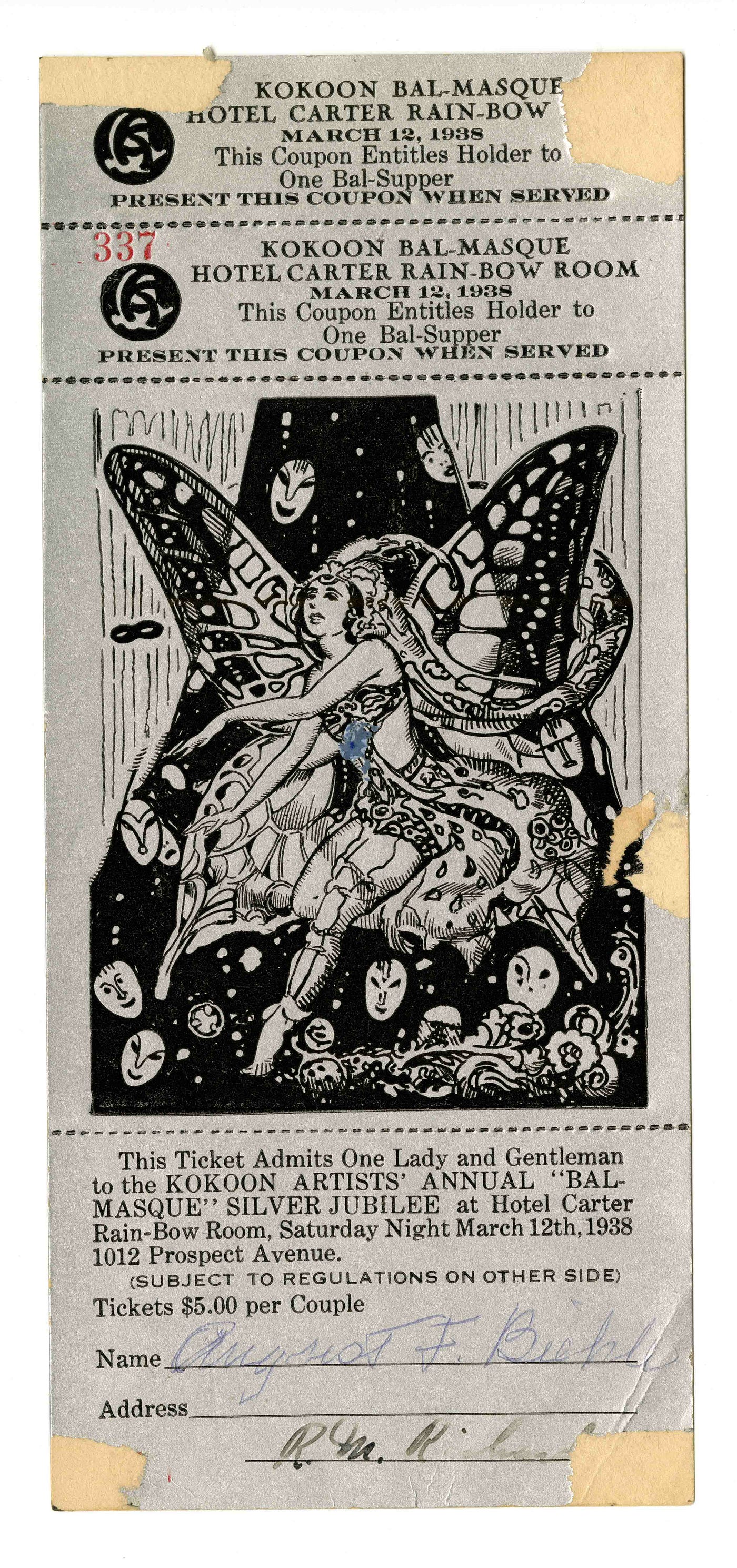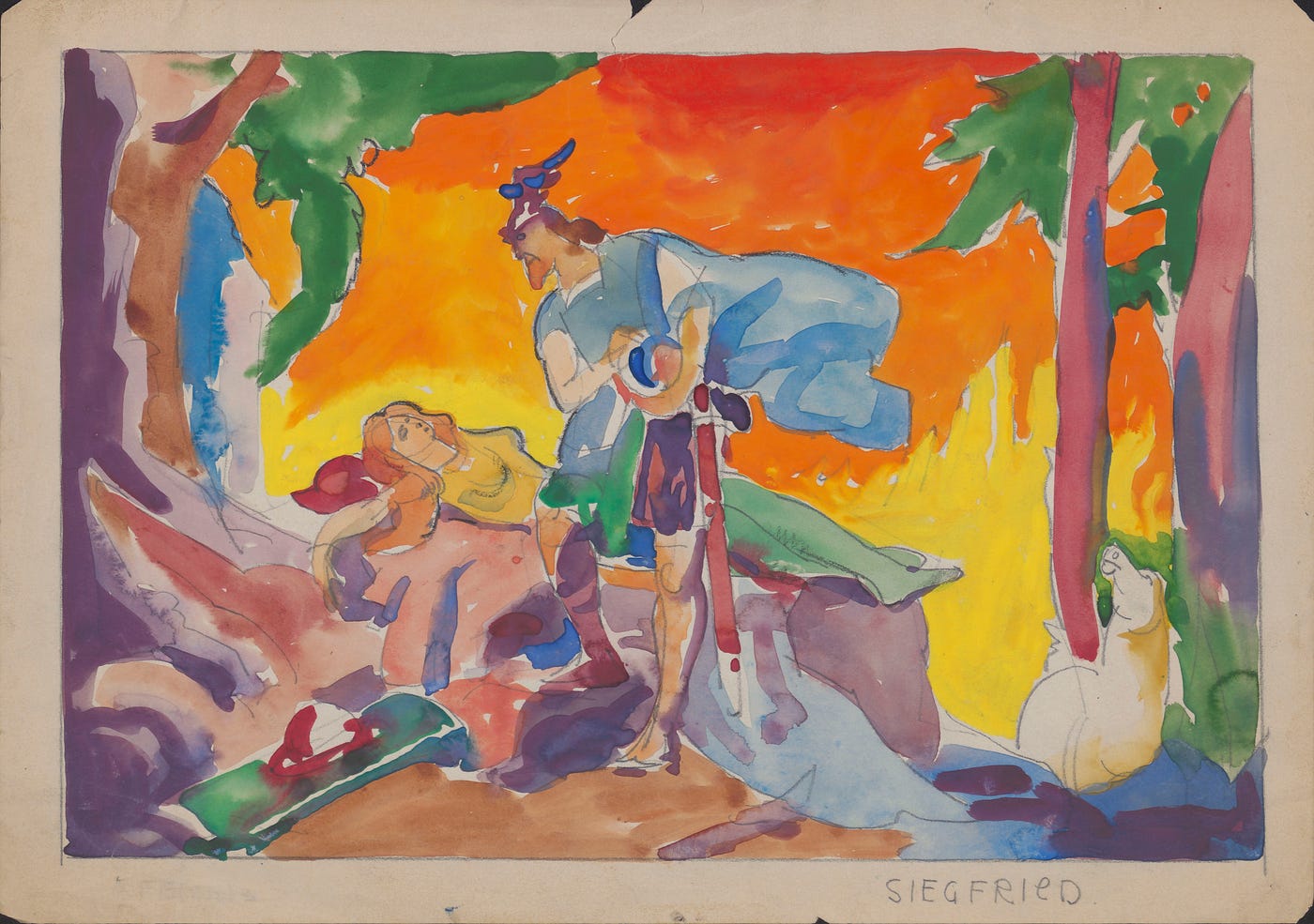
By Sara Kunkemueller, Digitization Intern, Ingalls Library and Museum Archives
This summertime, I joined the Ingalls Library and Museum Archives as a digitization intern. My operate associated numerous initiatives, from updating metadata to scanning books for the Net Archive, but substantially of my time was dedicated to digitizing artists’ collections in the archives. The initial components I scanned have been John Paul Miller’s sketchbooks.
Miller (1918–2013) was a renowned Cleveland jeweler. Getting graduated from the Cleveland Institute of Artwork (CIA), he returned following Army provider in Planet War II to join the school’s team as a professor. At the exact time, he commenced producing parts for area jewellery retail outlet Potter & Mellen. While Miller was educated in industrial style and design and expended his career concentrated on jewellery, he also harbored a deep adore for watercolor and created the two photos of his travels and a range of video materials. During his tenure at the CIA, lasting much more than 40 many years, he taught all these subjects. Miller’s work has been acquired by several non-public collectors as very well as by the Cleveland Museum of Art (CMA) and the Renwick Gallery, amid other folks.
Miller is regarded for his use of granulation, a technique ideal acknowledged from archaeological jewelry. As a result of the granulation course of action, tiny beads of metallic are affixed to a more substantial sort with out soldering. Miller utilized granulation to build extremely difficult area textures and patterns. Focusing on equally geometric abstractions and sensible animal and insect sorts, Miller’s use of granulation lends his system of work an general stylistic coherence, weaving a modernist aesthetic into organic surfaces. His sketchbooks are filled with repetitive drawings, the place Miller performs with the sort of the granulation sample. For the reason that Miller’s sketches are fairly shut in sizing to his ultimate goods, there are quite a few items in the CMA’s selection, in the archives’ Might Demonstrate documents, and in other art galleries that can be matched practically specifically to these web pages.



Miller’s sketchbooks augment his physique of perform with comprehensive notes on design, such as experimental notes manufactured in the workshop. Numerous are crammed with steel dust, and even smaller scraps of discarded gold, suggesting that they lived on his workbench and that styles had been subject to revision during production. In a person instance, Miller wrote out directions for a quick movie subsequent the creation of just one of his items, leaving guiding a meticulous report of his procedure. Along with charges and other information and facts, the inside covers often have a checklist of names or titles indicating which is effective of his had been commissioned, established for a individual demonstrate, or developed in sequence. Within just sketchbook 19, there is also a lengthy handwritten insurance policies appraisal detailing the minutiae of a piece’s design, from elements to techniques. All of this is suitable to potential collectors and conservators of Miller’s operate, but it also preserves his comprehensive expertise of metalworking and could possibly provide as a educating support. Miller’s sketchbooks consist of a wealth of information about his pieces, his teaching methods, and his personal and expert interests.
All 32 of Miller’s sketchbooks are at this time obtainable on the CMA Archives’ electronic collections. Also available to look at are thorough renderings of his rings and pendants, pictures from his excursions to California and Antarctica, and photos of his operates from the May well Exhibit assortment.
The remainder of my internship focused on the archives’ August F. Biehle Collection, composed generally of sketch materials relating to a variety of media and assignments through Biehle’s prolific job. A son of German immigrant and attractive artist August Biehle Sr. (also represented in the digital archives), Biehle (1885–1979) was a Clevelander who contributed immensely to the city’s booming artistic character in the early 20th century. Right after finishing his art instruction in Germany, Biehle returned to Cleveland just as it was achieving its peak of creative innovation and commenced functioning at the Otis Lithograph Company. Around the class of his vocation, he created amazing ads, murals, and paintings and turned a person of the most popular Cleveland school artists.
Biehle was also a member of the city’s preeminent eclectic art business, the Kokoon Arts Club. He brought with him each inventive talent and inspiration, owning seen an influential exhibition of Der Blaue Reiter (The Blue Rider), a German Expressionist group, in Munich in 1912. This knowledgeable Biehle’s personal modernist is effective and, in change, proved to be a stylistic affect for other club customers. The archives’ assortment has a variety of Kokoon Club objects, which includes posters for club activities, publication materials, and ticket patterns for the club’s famous and lascivious balls. The Kokoon Club authorized Biehle to experiment with his formal artistic teaching, and the interaction concerning the club’s flourishing modernists encouraged him to delve into a selection of designs, which include the building Art Deco and Cubism actions.

Of distinct observe in the Biehle collection are sketch components relating to murals he generated for various infamous structures across the metropolis, including the Kokoon Club, the Hofbräuhaus, and Herman Pirchner’s Alpine Village Theatre Restaurant. These mural sketches, frequently rendered loosely in gouache on paper or board, are placing not only since of their splendor but also due to the fact pretty few visual data of the murals continue to be. The Kokoon club, for example, highlighted many Biehle will work on its walls during its heyday. Having said that, immediately after the club’s decrease and disbandment in 1956, Biehle’s murals were being demolished with the constructing. This is also legitimate of his extensive get the job done in Pirchner’s Alpine Village, notably Biehle’s depictions of fantastical scenes and vintage moments from opera and theater. His influence prolonged to the Eldorado Club higher than the cafe, the place Pirchner hosted well known friends. In 1996, nonetheless, that framework was razed as nicely. Whilst there are some photographic documents that contains Biehle’s demolished mural will work, they are frequently concentrated on society situations and the people today who frequented the areas rather than on the artwork itself. The sketch renderings of Biehle’s murals are some of the very best remaining documentation of his existence in the course of influential buildings in the metropolis.

Past Cleveland, Biehle signifies a great encapsulation of the explosion of artistic innovation in the early 20th century. Stylistically adventurous, Biehle’s interests shifted around the study course of his profession. He was a gifted ornamental artist, possessing apprenticed beneath his father, and his lithographs were in immediate discussion with other key advertisers of his age. Biehle’s business will work incorporate fantastic research of his peers’ creations, these kinds of as numerous layouts for the Arrow Collar advertisements that made American artist Joseph Christian Leyendecker (1874–1951) well known, as properly as quite a few observational experiments that demonstrate the depth of his official coaching. Biehle’s prints were at the forefront of the shift from Artwork Nouveau to Art Deco. In the later on sections of Biehle’s occupation, his paintings took on a hanging Cubist model and had been imbued with the dynamism of Futurism. His lots of abilities make him an exceptional example of the energy of Cleveland’s creative scene at its height.
Biehle’s other perform consists of a variety of vibrant painted landscapes motivated by Cubism. The CMA holds in its assortment 1 these kinds of portray as perfectly as works on paper by the artist. To see the Biehle assortment on line, make sure you pay a visit to https://digitalarchives.clevelandart.org/electronic/collection/p17142coll15.







